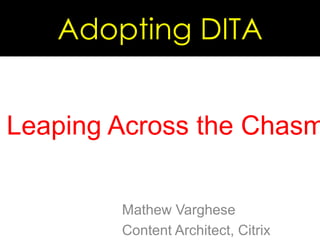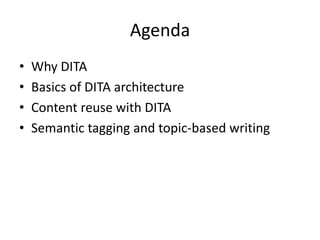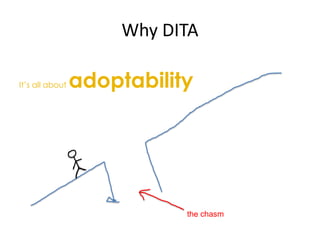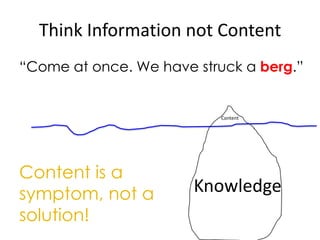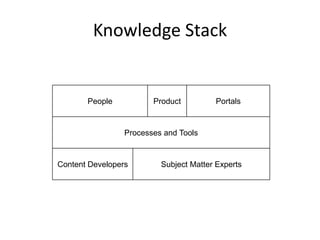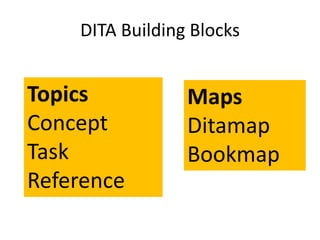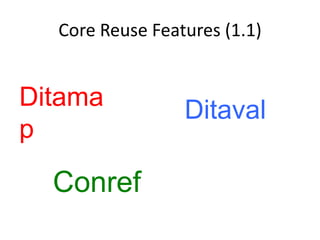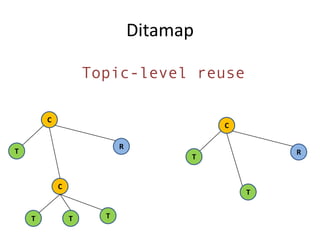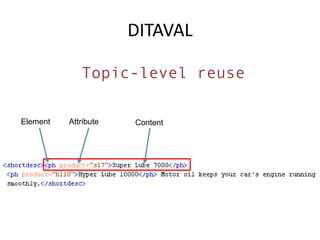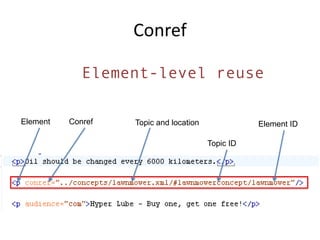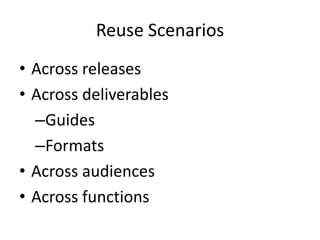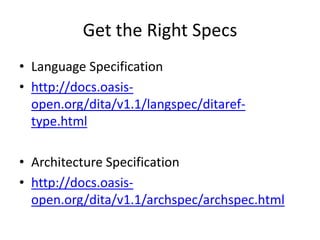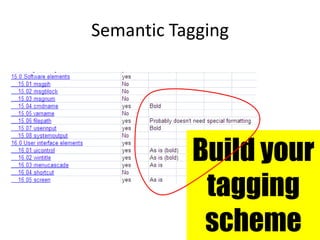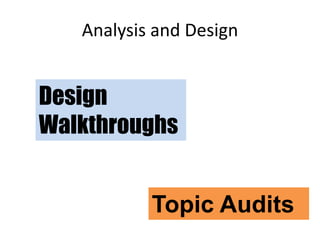Why DITA?
- 1. Adopting DITALeaping Across the ChasmMathew VargheseContent Architect, Citrix
- 2. AgendaWhy DITABasics of DITA architectureContent reuse with DITASemantic tagging and topic-based writing
- 3. Why DITAItâs all about adoptabilitythe chasm
- 4. Think Information not ContentâCome at once. We have struck a berg.âContentContent is a symptom, not a solution!Knowledge
- 5. Can your product sell itself?
- 6. Knowledge StackInterfacesPeopleProductPortalsProcesses and ToolsPeopleContent DevelopersSubject Matter Experts
- 8. Core Reuse Features (1.1)DitamapDitavalConref
- 11. ConrefElement-level reuseConrefElementTopic and locationElement IDTopic ID
- 12. Reuse ScenariosAcross releasesAcross deliverablesGuidesFormatsAcross audiencesAcross functions
- 13. Semantic Tagging and Topic-based WritingGet the specsDevelop your tagging schemeStrengthen your analysis and design processTagging and editing
- 14. Get the Right SpecsLanguage Specificationhttp://docs.oasis-open.org/dita/v1.1/langspec/ditaref-type.htmlArchitecture Specificationhttp://docs.oasis-open.org/dita/v1.1/archspec/archspec.html
- 15. Semantic TaggingBuild your tagging scheme
- 16. Analysis and DesignDesign WalkthroughsTopic Audits
- 17. Tagging and EditingEditors are your greatest assets!
- 18. QUestions
Editor's Notes
- #4: All the knowledge that the user needs to adopt the product should provided as efficiently as possible.
- #5: We want to harness the knowledge that people within the organization possess. Content doesn'tât isn't a true representation of our products.Itâs time to pull the experts.Documentation lacks depth â shows that somethings wrong in the knowledge sharing area.Creating lots of content is not the solution, We need to find a smarter way of pleasing the customer.
- #7: This diagram illustrates the components of a knowledge ecosystem. The size of each component indicates the relative impact each component has on the efficiency of the ecosystem.
